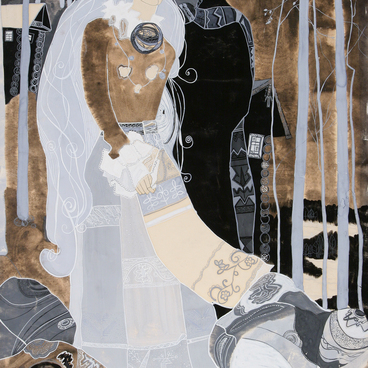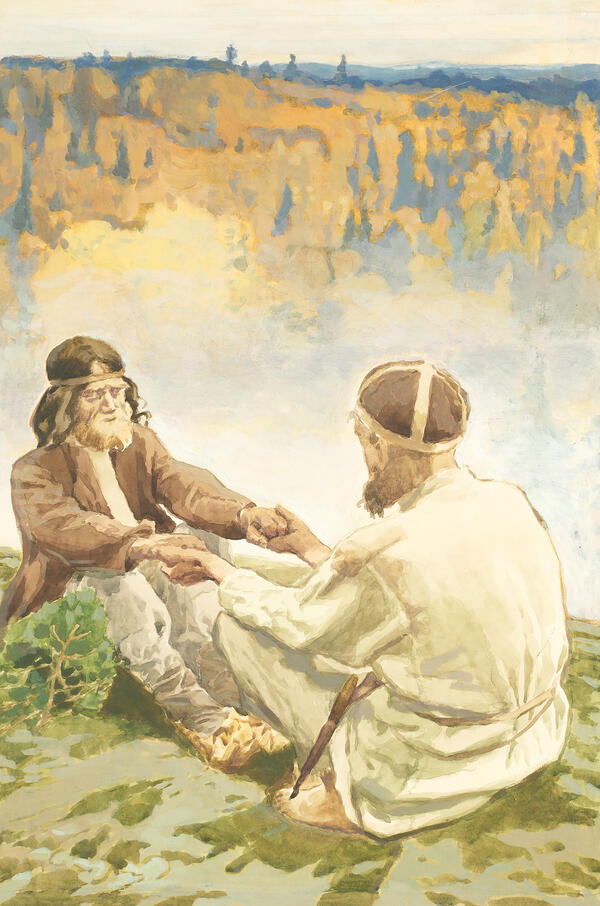Myud Marievich Mechev was a renowned Russian graphic artist, illustrator, and landscape painter.
The beginning of his artistic career was marked by his participation in the 1949 all-union contest for the best illustrations of the Karelian and Finnish epic poem “Kalevala”. He won third place.
In 1967, Myud Mechev decided to revisit this topic, returning to the “Kalevala” with a completely different medium of linocut. His “second” version of the “Kalevala” was published in 1975 in Finnish, and has since been reprinted three times, both in Finnish and in Russian, with new illustrations. For his illustrations to the “Kalevala, ” Mechev received the Ilya Repin State Prize of the RSFSR in 1978.
In Karelian and Finnish mythology, Hiisi is a forest spirit, often depicted as a ghost or a giant. People made formations of huge stones (known as Hiisi groves), dedicating them to Hiisi. The name “Hiisi” is associated with a word that denoted special sites — sacred groves where it was taboo to cut down trees or break branches. In these groves, people in ancient times would find their eternal rest, and therefore, the spirit Hiisi has knowledge of the limits of life.
Hiitilaiset (literally, “Hiisi’s people”), are the souls of people who have not found their final resting place. It was believed that travelers who encountered these spirits moving in whirlwinds or on horses “along Hiisi’s path” might die or become insane. According to legends, Hiisi’s appearance was a sign of impending death.
The 12th rune of the “Kalevala” refers to the “water hiisi spirits”. In the 13th rune, Hiisi comes in the form of a moose that the hostess of Pohyola, the elderly witch Louhi, instructs the protagonist Lemminkainen to capture. In the eighth rune of the “Kalevala”, Hiisi (Lempo) forces Wainamoinen, who is building a boat, to injure himself with his ax. In the 26th rune, Hiisi is portrayed as a devil, an adversary of the creator god, who conjures monsters on Earth (for example, the hundred-eyed worm of Pohyola).
Hiisi’s attributes include a moose and a horse. The myth of the cosmic ski hunt for a giant moose is among the most ancient plots. Some scholars draw parallels between the image of Hiisi’s moose, present in runes, and depictions of ships featured on Karelian petroglyphs, which are quite unique: they can be distinguished by a protruding beam at the front of a ship shaped like a moose’s head.





